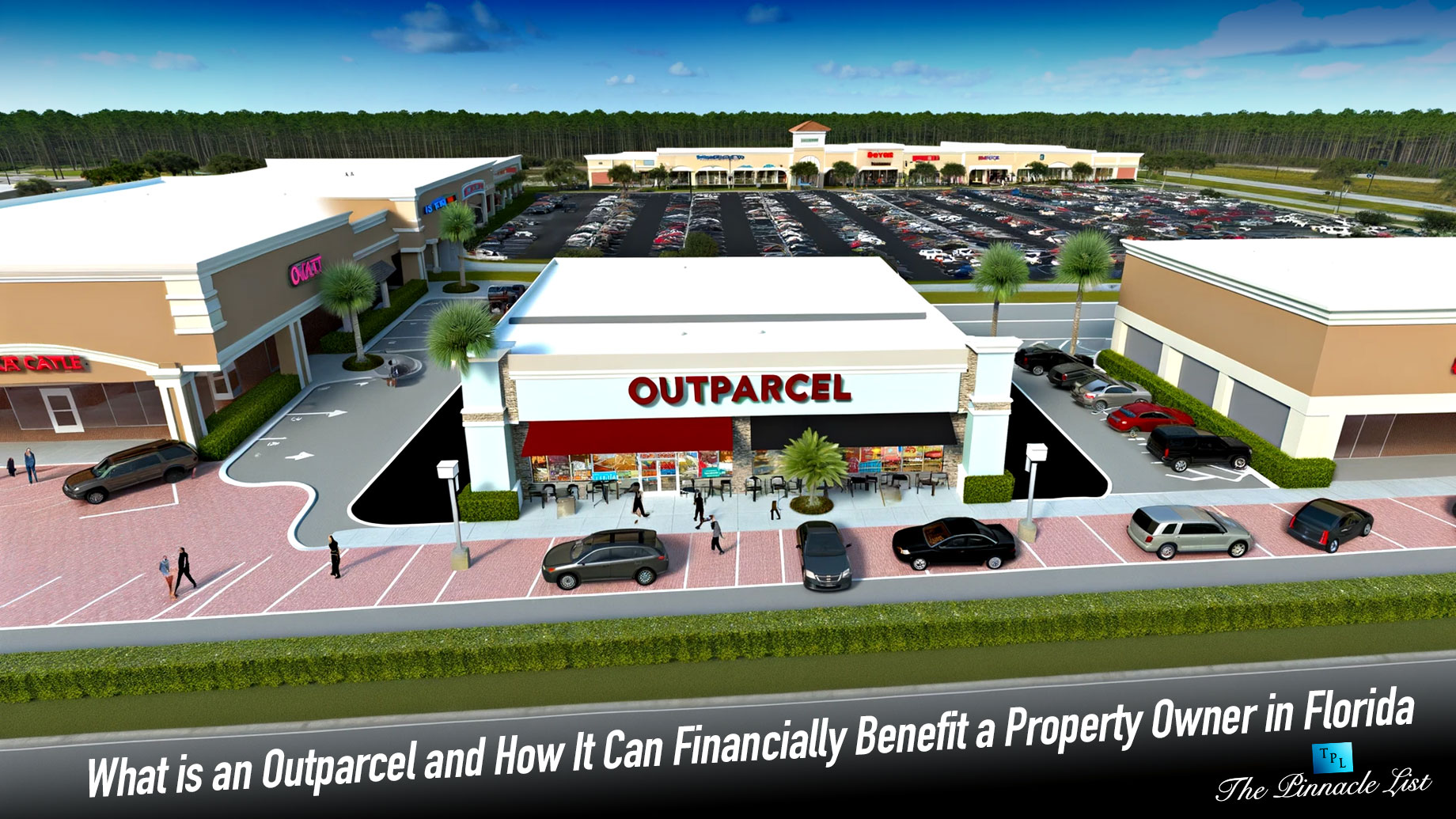
Identifying the simplest retail, commercial out parcel for leasing or purchasing involves a strategic approach that balances location, market demand, development potential, and financial viability. Outparcels, often situated within the parking of many larger shopping centers or malls, offer high visibility and accessibility, making them attractive for fast-food restaurants, banks, and various retail operations. Here’s a guide to assist in navigating the method of choosing an optimal retail out parcel:
What is an “Outparcel” Anyway?
An outparcel, within the context of economic land, refers to a parcel of land that’s situated within the larger footprint of a shopping mall, mall, or commercial development but physically breaks away from most buildings. These parcels are typically located along the periphery of the property, often fronting major roads or access points to maximise visibility and accessibility. Outparcels are popular locations for standalone stores, restaurants, banks, and other service-oriented businesses that enjoy high traffic and visibility yet require or prefer a definite building break away from most shopping malls or mall structures.
1. Define Your Business Requirements
- Intended Use: Clearly identify the sort of business you propose to work, as this may influence the suitability of varied outparcels. Different operations have unique needs regarding size, accessibility, and proximity to other businesses.
- Size and Configuration: Determine the space requirements for your business, including the building size and any necessary outdoor space, like drive-thrus or parking.
2. Market and Site Analysis
- Demographics: Analyze the area’s demographics to make sure there is an honest match between your target market and, therefore, the local population. Search for high population density and demographics that align with your customer base.
- Traffic Patterns: High visibility and simple access are crucial. Consider both vehicular and pedestrian traffic. Outparcels near major roads, intersections, or entrances to larger shopping centers are typically more desirable.
- Competitor Presence: Evaluate the competitive landscape. Being near complementary businesses can increase pedestrian traffic, but you’ll want to avoid areas with the oversaturation of comparable services.
3. Evaluate Development Constraints and Opportunities
- Zoning and Land Use Regulations: Confirm that the outparcel’s zoning allows for your intended use. Investigate any restrictions or covenants that would impact your operation.
- Utilities and Infrastructure: Make sure the site has access to necessary utilities and infrastructure. Consider the prices and logistics of connecting services if they’re not already in situ.
- Environmental Assessments: Conduct or review environmental assessments to spot potential contamination or restrictions associated with protected areas.
4. Financial Analysis
- Cost Assessment: For leasing, understand the complete costs, including base rent, common area maintenance (CAM) fees, taxes, and insurance. For purchasing, evaluate the acquisition price, closing costs, and any required improvements.
- Revenue Projections: Estimate your potential revenue supported the location’s traffic, the local market, and competitive analysis. this may help assess the site’s financial viability.
- Financing Options: If purchasing, explore financing options early to know your budget constraints and investment requirements.
5. Negotiation and Due Diligence
- Lease Terms or Purchase Agreement: Work with a billboard land attorney to barter favorable terms, whether leasing or purchasing. Pay close attention to the fine print in the lease agreement — especially for “vague” CAM charges.
- Due Diligence: For purchases, comprehensive due diligence is important. This includes reviewing title information, conducting a survey, and verifying that there are not any easements or liens that adversely affect the property.
6. Leverage Professional Expertise
- Land Professionals: Collaborate with commercial land agents or brokers who concentrate on retail properties. they will provide valuable insights into market conditions, potential sites, and negotiation strategies.
- Legal and Financial Advisors: Engage legal and financial professionals to make sure that your interests are protected throughout the leasing or purchasing negotiations.
Think The Process Through
Selecting the proper retail commercial outparcel involves careful consideration of your business needs, thorough marketing research, and detailed financial planning. By systematically evaluating potential sites against these criteria, you’ll identify a location that supports your business objectives and offers potential for growth. Seeking to acquire commercial real estate in Florida, or for that matter, in the growing states in the Southeast, will require investment both in time and money for the entrepreneur developer.